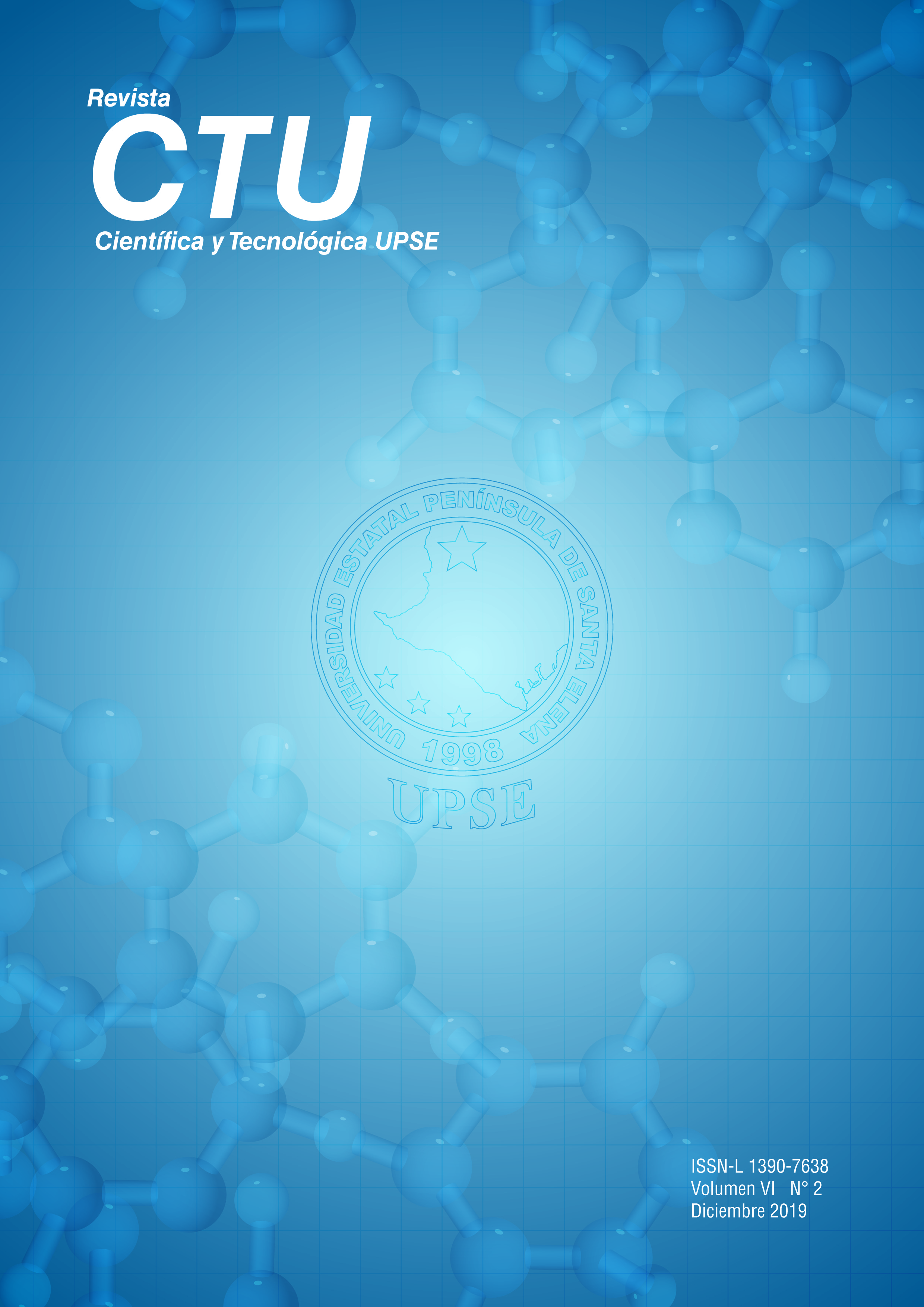Evaluation of the effect of the mobile phase on the separation efficiency of the aromatic hydrocarbon fraction, obtained by means of the sara analysis technique
DOI:
https://doi.org/10.26423/rctu.v6i2.456Keywords:
SARA, aromatics, mobile phase, solvents, hydrocarbons, chromatographyAbstract
This research shows influence of mobile phase, as chromatographic variable, on the fraction of aromatic hydrocarbons in SARA separation, in order to establish impact on optimization of separation process. The methodology used was to perform 32 chromatographic separations to 32 maltene subsamples, varying the mobile phase to elute the aromatic hydrocarbons between toluene, benzene and a DCM / n-hexane mixture (30:70 v / v). The results obtained revealed that the mobile phase variation affects the extraction percentage of the fraction under study, depending on the nature of the solvent. When toluene and benzene are used as the mobile phase, the results are statistically the same and differ from that obtained by the DCM / n-hexane mixture, the extraction order being the following: toluene ≥ benzene> DCM / n-hexane, however, the fractions of aromatic hydrocarbons extracted with the mixture have experimental evidence of being purer than those obtained with the rest of the solvents used.
Downloads
References
American Society for Testing and Materials. ASTM D-4124 (2001). Test Methods for Separation of Asphalt Into Four Fractions. Philadelphia.
American Society for Testing and Materials. ASTM D-1298-99 (2005). Standart Test Methods for Density, Relative Density (Specific Gravity), or API Gravity of Crude Petroleum and Liquid Petroleum Products by Hydrometer Method. Philadelphia.
Ashoori, S., Sharifi, M., Masoumi, M., Salehi, M. (2017). The relationship between SARA fractions and crude oil stability. Egyptian Journal of Petroleum 26, 209-213.
Bastow, T., van Aarssen, B., y Lang, D. (2007). Rapid small-scale separation of saturate, aromatic and polar components in petroleum. Organic Geochemistry 38(8), 1235-1250.
Bissada, K., Tan, J., Szymczyk, E., Darnell, M., Mei, M. (2016). Group-type characterization of crude oil and bitumen. Part I: Enhanced separation and quantification of saturates, aromatics, resins and asphaltenes (SARA). Organic Geochemistry 95, 21-28TAS1IMeDBT2DBT/FMF-13% Rc4Tolueno0,53±0,022,26±0,160,72±0,040,72±0,020,83±0,01Benceno0,54±0,032,39±0,100,74±0,020,74±0,080,84±0,05DCM/n-hexano0,55±0,012,34±0,130,76±0,030,76±0,020,86±0,02
Camin, D., y Raymond, A. (1973). Chromatography in the Petroleum Industry. Journal of Chromatographic Science 11(12), 625-638.
Corbett, L. (1969). Composition of asphalt based on generic fractionation, using solvent deasphaltening, elution-adsorption chromatography, and densimetric characterization. Analytical Chemistry 41(4), 576-579.
Durst, H., y Gokel, G. (1985). Experimental organic chemistry. McGraw Hill Book Company. Second edition, 600p.
Fan, T., y Buckley, J. (2002). Rapid and accurate SARA analysis of medium gravity crude oils. Energy & Fuels 16(6),1571-1575.
]Faraj, M., Knidsen, T.S., Y Nytoft, H. (2016). Organic geochemistry of crude oils from the Intisar oil field (East Sirte Basin, Libya). Journal of Petroleum Science and Engineering 147, 605-616
Galagovsky, L. (1999). Quimica Orgánica: Fundamentos teórico-prácticos para el laboratorio. Buenos Aires: Eudeba. First edition, 246p.
Islas -Flores C. A., Buenrostro-Gonzalez E., Lira-Galeana C. (2005) Comparisons between Open Column Chromatography and HPLC SARA Fractionations in Petroleum, Energy Fuels2005 195 2080-2088
Jewell, D., Weber, J., Bunger, J., Plancher, H., y Latham, D. (1972). Ion-exchange, coordination, and adsorption chromatographic separation of heavy-end petroleum distillates. Analytical Chemistry 44(8), 1391-1395
Leal, B. (2009). Evaluación de las variantes de la separación SARA en muestras de crudo para la elución eficiente de los compuestos aromáticos. Trabajo de especialización de grado. Universidad Central de Venezuela. 42p.
Nie, F., He, D., Guan, J., Li, X., Zhang, Q. (2018). Oil sand pyrolysis: Evolution of volatiles and contributions from mineral, bitumen, maltene, and SARA fractions. Fuel 224, 726-739.
Rudyk, S. (2018). Relationships between SARA fractions of conventional oil, heavy oil, natural bitumen and residues. Fuel 216, 330-340.
Skoog, D., Holler, F., Nieman, T., y Martinez Gomez, M. (2001). Principios de análisis instrumental. Madrid: McGraw-Hill Interamericana. Primera edición, 1028p.
Speight, J.G. (1999). The Chemistry and Technology of Petroleum. 3rd. Ed. New-York.Marcel Dekker.
Speight, J.G. (2004). Petroleum asphaltenes. Part 1. Asphaltenes, resins and the structure of petroleum. Oil Gas Science Technology 59, 467–477.
STATISTICA (Version 8.0) [Programa disponible en DC]. (2007). Disponible en: www.statsoft.com.
Versan, M., Kiymet, K., Gul G. (2013). Thermal characteristics and kinetics of crude oils and SARA fractions. Thermochimica Acta 569, 66-70.
Wallace, D., Henry, D., Pongar, K., y Zimmerman, D. (1987). Evaluation of some open column chromatographic methods for separation of bitumen components. Fuel 66(1), 44-50.
Downloads
Published
Issue
Section
License
El titular de los derechos de autor de la obra, otorga derechos de uso a los lectores mediante la licencia Creative Commons Atribución-NoComercial-CompartirIgual 4.0 Internacional. Esto permite el acceso gratuito inmediato a la obra y permite a cualquier usuario leer, descargar, copiar, distribuir, imprimir, buscar o vincular a los textos completos de los artículos, rastrearlos para su indexación, pasarlos como datos al software o usarlos para cualquier otro propósito legal.
Cuando la obra es aprobada y aceptada para su publicación, los autores conservan los derechos de autor sin restricciones, cediendo únicamente los derechos de reproducción, distribución para su explotación en formato de papel, así como en cualquier otro soporte magnético, óptico y digital.












